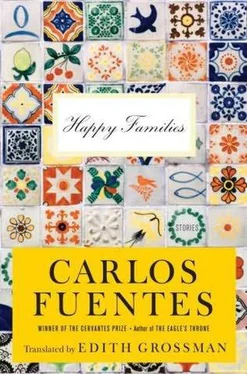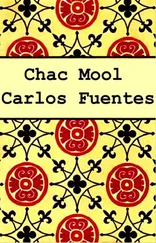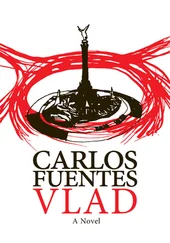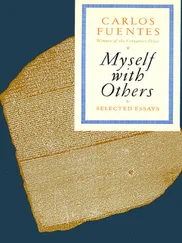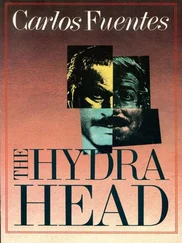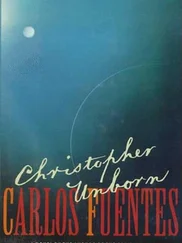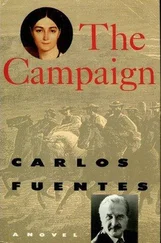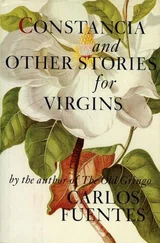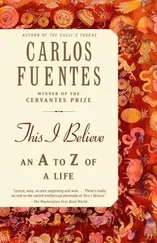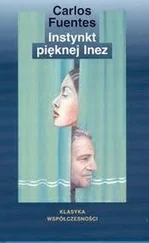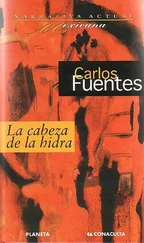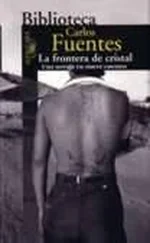It was auspicious that the movies brought them together. In the silver images of the Balmori, they had discovered a capacity for wonder that set fire to their love and kept it alive. They divided their attraction to films among the several unreachable models offered to them by the irreplaceable darkness of the cinematographic cave. They let pass the pretty ones like Robert Taylor, the rough ones like James Cagney, the extroverts like Cary Grant, the introverts like Gary Cooper, and settled into their admiration, secret in its androgyny, of Greta Garbo, the woman men wanted to be but the woman no man would ever become. Mademoiselle Hamlet, as Gertrude Stein called her (or was it Alice Toklas?). The sphinx. Her face filled with wintry absence projected from the screen like an offering and a challenge. Leave me alone, like bullfighters, but make me yours, like courtesans.
As soon as they moved into a nice apartment with neoclassical architecture in the Roma district, Guy and José Luis placed some photos of Garbo in strategic spots, though their principal paintings were given to them by Alfonso Michel and Manuel Rodríguez Lozano. A still life that throbbed with vital breath in the exuberant, disheveled, husky Michel (a midwife to painting) and a funeral procession in blacks, whites, and grays from Rodríguez Lozano (its gravedigger).
Together they found their professions. Guy Furlong opened an art gallery on Calle de Praga to give a space to painters who used an easel and to prove that murals were not the only art in Mexico. José Luis established a law office on Avenida Juárez that soon specialized in discreet divorce negotiations, division of property, awarding of custody, and other troublesome matters in the life of a family that ought to be kept away from public opinion.
“To be who we are, we need money,” José Luis said judiciously, and of course Guy agreed.
In order not to worry about money, they had to make money. Without ostentation. The important thing was to keep alive desire, the capacity for wonder, to share time, to create a common background of memories and an evanescent oasis of desires. If love was divided among several unreachable models, affection was concentrated on a single intimate model. Themselves.
The two boys established certain rules for their life in common. Guy said it one night:
“The first time you made love to me, you accepted me once and for all, without any need to test me or constantly reaffirm the ties that bind us. Between us, there are more than enough complications.”
It really wasn’t necessary to reaffirm a love given as spontaneously as the flow of a fountain, though with constant references to everything in the life of the world that pleased them and identified them. Their intimacy was the thing that was sacred, untouchable, the impalpable diamond that, handled too much, could change into coal. In the secret chamber of their intimacy, Guy and José Luis established a relationship as close to itself as water is to its continent. “Death Without End,” the great poem by José Gorostiza, was one of the couple’s vital bibles. Form was content and content form with no more motive than the patterns of delight in touch begun that increasingly distant afternoon in the movies. The joy of mutual contemplation. The knowledge of the respect owed to each one and to the couple.
As for the world. . they weren’t naive. They knew they were in society, and society tests us, it demands periodic examinations, especially of homosexual lovers who dare to be happy. José Luis and Guy prepared good-naturedly to endure the world’s tests, aware that they wanted to have contact with the group but avoid (as if it were mange) promiscuity.
“You’re not a flirt,” José Luis said to Guy. “You just display yourself. You like to show yourself off. You’re right. You’re handsome, and you ought to let yourself be admired. I’m happy you’re like this. I’m happy people admire you.”
“Don’t fool yourself,” Guy responded. “People need to know me to love me. If a person doesn’t know me, he probably won’t like me.”
They laughed at these topics and admitted:
“There can always be somebody who seduces us.”
Until now, no one had come between them. The serious, amiable behavior of the boys, their stability as a couple, made them likable. They dressed well, they spoke well, they were doing well in their respective careers. They saved criticism of other people for private moments. They weren’t gossipmongers.
“Did you see the faces Villarino was making? He was putting moves on you.”
“You like people to admire me, didn’t you say that?”
“Show yourself off now that you’re young. Take a good look at Villarino so you never become a flirt when you’re old. How awful!”
“No. How ridiculous!”
Both had been educated in English schools, but they never referred to what is called “the English vice.” They did accept, however, a rule of conduct learned by means of educational blows with a cane to the gluteals:
Never complain. Never explain.
Ni quejarse ni explicarse. The demands of love imposed themselves naturally, without any need for complaints or explanations, in the very act of love. Demands before love tended to kill pleasure, withdrawing its implicit satisfactions, losing them in the harsh antagonist of love, which was logic, though this only reinforced the professional competence of the two men.
And so there was a very attractive equilibrium in their lives, measured out between their work and their private life. Which doesn’t mean that my friends Guy and José Luis didn’t have a social life in the very lively Mexico City of the forties and fifties to the mid-sixties. They participated in various groups founded to the almost biological rhythm of the decades and their newsworthy duration, their inevitable decline, the attachments to and detachments from social groups and, in particular, the solid middle class to which they both belonged. They were present at the end of the fiesta dominated by Diego Rivera and Frida Kahlo, two large multicolored piñatas that skillfully avoided the sticks of governments, political parties, or social classes. Artists ate apart. They owed nothing to anyone except art. Frida and Diego swung picturesquely at an unreachable height to which you had access only if your name was Trotsky, Breton, or Rockefeller, or if you were a modest cantina owner, the projectionist at the movies, or the indispensable hospital nurse. In the forties, José Luis and Guy were present only at the end of that boisterous party, the tail of the comet that pulled along in its generous wake the lights of artistic creativity, sexual confusion, and political arbitrariness.
Then they moved among the romantic violins of Reyes Albarrán’s Rendez Vous and the Jockey Club, which became the most discreetly gay and refined place to meet on Sunday thanks to the management of Jaime Saldívar, a man endowed with inseparable amiability and elegance, capable of making himself followed, like the pied piper of Hamelin, by newly minted princes and the patriarchs of ancient line-ages. Although the mix of European epavés from World War II and the stars of a Hollywood undecided between Roosevelt’s New Deal and McCarthy’s witch hunt met at the Ciro’s of the dwarf A. C. Blumenthal, a partner of the gangster Bugsy Siegel, and in what remained of the intimate wartime cabarets: Casanova, Minuit, Sans Souci. .
Then came the adventures of the Basfumista group, fervent, anarchic, invented by the painter Adolfo Best Maugard, a former assistant to Sergei Eisenstein in Mexico and endowed with a vestal in residence, Mercedes Azcárate, and a slim blond philosopher, Ernesto de la Peña, who knew some twenty languages, including that of Christ, and was master within the group of a distracted vocation for alarm in a society still capable of being surprised and forgetting from one day to the next about its own newness. Basfumismo never defined itself beyond the Chaplinesque call for attention before a dehumanized society.
Читать дальше
